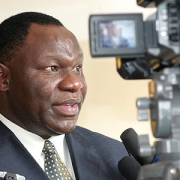A business model for delivering information to smallholder farmers: RUNetwork
As the hype for integrating new information and communication technologies (ICTs) into agricultural value chain projects increases, one of the common questions that ICT4D analysts often try to answer is, who pays for the service – the poor farmer, the project, the government, or a donor agency?
Payment for information services to farmers is one of the components of a business model for deploying ICT solutions to rural agricultural communities. A business model, however, goes beyond just the cost of the service to the user, to the sources of funding of the service, avenues for income generation, the value of the service to the user, the potential to scale beyond pilot stage, and the capacity to sustain itself after the initial funds runs out. Business models are seen as systems that organizations use to create, deliver, and capture value.
The clip below describes how Rural Universe Network (RUNetwork) uses a voucher system to answer some of these important questions in its bid to bridge the gap between smallholder farming and scientific research.
As you watch, try to identify how RUNetwork creates value to the users of the service; how the system generates revenue for operation; who pays for the services being provided; how is the system being scaled; and how is the service sustained?
The model was successfully tested in 5 different countries and scaled up to 14 communities all over Uganda. It is presently introduced in another 15 African countries in a collaborative project between the Forum for Agricultural Research in Africa (FARA) and the Federal Office for Agriculture and Food (BLE Germany) with financial support from the African Development Bank (AfDB).
For more information on RUNetwork, visit here.







































